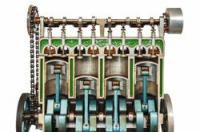Feeding moorland birds and resident birds - this is how it works
Stroke birds stay like the resident birds in winter in our latitudes. With proper feeding, you can help the birds through the cold winter.
In addition to the resident birds, which stay in the same location all year round, and the migratory birds, which are drawn to the south in the cold months, there are also the line birds. These are a mix between resident and migratory birds. They stay in their usual area in winter, but increase their radius in order to better adapt to small climatic conditions.
Due to global warming, some of the former migratory birds are even becoming hackers. In order for the birds to be able to maintain their body temperature in winter, they are dependent on sufficient energy supply from species-appropriate food. If there is a lot of snow or the ground is hard frozen, the food supply is rare. In this case, you can support birds with targeted feeding.
Distinguish perch birds and resident birds
- Resident birds are, for example, woodpeckers, ravens and house sparrows.
- The line birds include ducks, which move to more distant waters when the water is frozen, as well as many species of finches and titmouse. The line birds include blackbirds and robins, which are also referred to as partial migrants because they choose their winter location according to the prevailing climatic conditions.
- Many former migratory birds such as song thrushes, starlings, skylarks, lapwing or blackcap spend the winter in our latitudes and behave similarly to the barnacles.
Starlings are one of the birds that are still widespread across Europe. In …
Winter feeding for resident birds and watercocks - but right
- For the sake of the birds, plant as many bird protection trees as possible in your garden, which are plentiful Berry bear, such as hawthorn, firethorn or medlars.
- In addition to the natural food supply, you can feed them during snowfall and frost, but only then and then, please, regularly.
- Ordinary birdhouses look nice, but are quite unsanitary because the birds contaminate the food with droppings and / or walk around in it. Food dispensers that can be purchased for little money are more suitable.
- The feed dispensers should be hung up so that they are protected from wind, snow and rain, and the feeding area should be well arranged so that the birds creep up on them Cats notice early.
- If you use normal bird feeders, you should add small amounts of the feed daily and clean the bird feeder with hot water every two days.
- In addition to food dispensers and birdhouses, you can also hang commercially available food bells, tit rings, or feed bars. Millet or strung apples are also very popular.
- Make the food supply as rich as possible. Sparrows, finches and bunting are among those grain-eaters who are satisfied with ready-made feed mixes and sunflower seeds. Tits, robins, blackbirds, wrens and dunnock eat soft food. You can also offer these birds oatmeal, raisins, bran and fruit at.
- Do not give them any salty leftover food or bread as this will harm the birds.
With targeted winter feeding, you can support resident birds and hawks. If you set up the feeding station near the window, you have the opportunity to observe the feathered friends up close.

